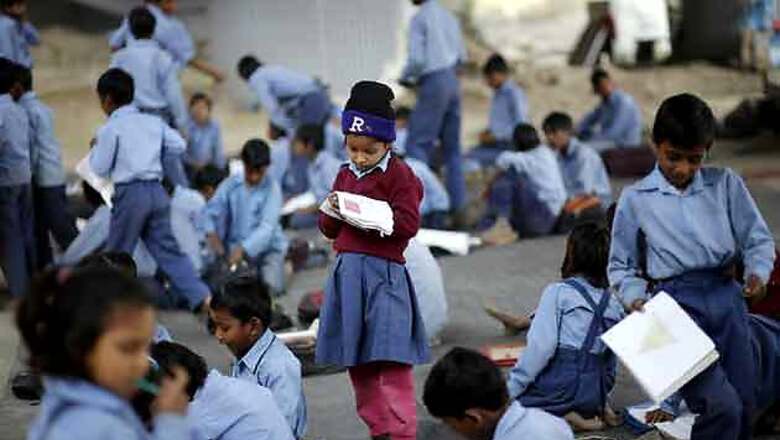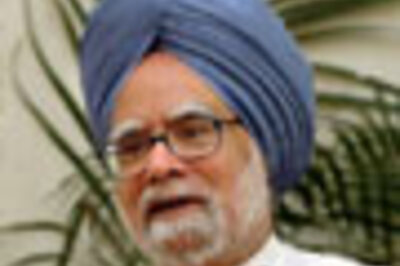
views
New Delhi: Skills and knowledge are the driving force of economic growth and social development for any country. Indian demographic is with the unique facet of being fraught with a majority of young populace. Education sector in India is well developed and mature. The nation's educational infrastructure offers a concrete system comprising of Primary education, Secondary education and Higher education. The constitution of India has made education a fundamental right provisioning free and compulsory education for children between 5 to 14.
Education and Skill development becomes quite an imperative sector to appropriate this massive human resource. The supply of public education is inefficient and leaves a significant shortfall which is being filled by private education institutions. The working age group between 15 to 59 years is its largest bulk constituting of more than 65% of total population. In such a backdrop, 29% of children are enrolled in private schools. In higher education sector, private institutions, colleges and universities are playing a pivotal role in the education landscape.
Potentially the target group for skill development comprises of all those in the labour force, including those entering the labour market for the first time. The current capacity of the skill development programs is 3.1 million. India has target of skilling 500 people by 2022.According to a survey 2 percent of the country’s workforce is skilled which is much lower when compared to the developing nations; there is a dual challenge of developing skills and utilizing them in a proper way.
Education and Skill development sector constitutes of Industrial Training, Professional courses and vocational education apart from School and higher education. Skill development is associated more to the context of industry oriented training that fetch immediate employment and earning. In India, education and skill development sector is structured under two independent ministries.
The Ministry of Human Resource and Development is associated with conventional education system. Primary Education, Secondary Education, Higher Secondary and Higher education sector is regulated by this ministry. Industry oriented training and education is supervised by the Ministry of Labor and Employment. Industrial Training Institute and other vocational education programs are maintained under the ambit of this ministry. Additionally, a number of commissions and agencies such as AICTE, UGC are dedicated for higher education in the country.
About 1.3 million schools operate in India where over 227 million students are enrolled. The figure indicates the state of regular enrolment in primary and secondary education levels. Side by side, vocational education courses is also operated under the National Institute for Open Schooling. According to surveys, total number of government higher educational institutions in India is 20, 769. It includes Universities, Research Institutions, Colleges for Arts, Science and Commerce, Engineering and Architecture and Medical institutes, Polytechnic institutes and Teacher’s Training Institutes.
In contrast, the private sector has a much larger role in the education scenario of the country. Apart from primary education sector, private colleges, universities and institutes are contributing substantially to higher education. Industrial Training Institutes and Industrial Training Centers are the primary faculties for Vocational Training. 6,906 such institutes and centers are operating across the country imparting industrial training courses to about 9.53 lakhs students.
The government has to put massive effort to form better educational structure especially for skill development sector comprising of industry-oriented training. A number of special initiatives are rolled by Government. The National Skill Policy, among others, devised in 2009 set a target to impart skill development training to 500 million by 2022. An apex institution for devising policy and review Skill development sector is the Prime Minister’s National Council on Skill Development. Initiatives were also taken to coordinate both private and public sector to impart skill development.
National Skill Development Coordination Board, NSDC is setup on a PPP model. It is a juxtaposition of public sector and private entities. The board formulates policies and programs on National Skill Development under the ambit of Prime Minister’s Council. It also evaluates and monitors the outcomes of such programs. The agency planned to establish 1500 new ITIs and 5000 skill development centers. The NVEQF, National Vocational Education Qualification Framework will be formed for an integrated Skill development infrastructure. This framework is for affiliations and accreditation of vocational education and training systems.
Initiatives for skill development should be oriented towards both catering the demand and creating the demand. Skill development is strongly related to the market and industry. Efficient skill development programs will add value across wide sections of workers creating rich human resource. The need of skill development for employability is across every section of the workforce. From operators and technician level workers to highly skilled labor comprising of college graduates needs an effective platform for skill development. The initiatives by government are massive; however, the extent to which they operate is inadequate to bring effective progress to the lackadaisical nature of current scenario. This calls in for pervasive initiative by private entities through collaborated as well as independent works. Contributions by companies such as Everonn and Educomp in vocational training sector are noteworthy. Devising a modular structure for imparting skill development is an effective approach for progress in this direction.
There is massive scope of development in Education sector of India. Although a number of institutes are successful to be among top 100 in global ranking, deficiency is quite apparent. India should focus on a holistic approach to hone the human resource of the nation, by implementing better solutions to reach out to thousands of villages in rural landscape. Leveraging private sector is beneficial since a competitive sense to provide service is inductive in this domain. This helps in propagating effective and innovative ways to educate the deprived section bringing in more effectual as well as pervasive national development.
Disclaimer: Author Ajay Chhangani is CEO, Rise India Group. The above article represents the personal views of the author. It does not reflect the stand of CNN-IBN/IBNLive.




















Comments
0 comment